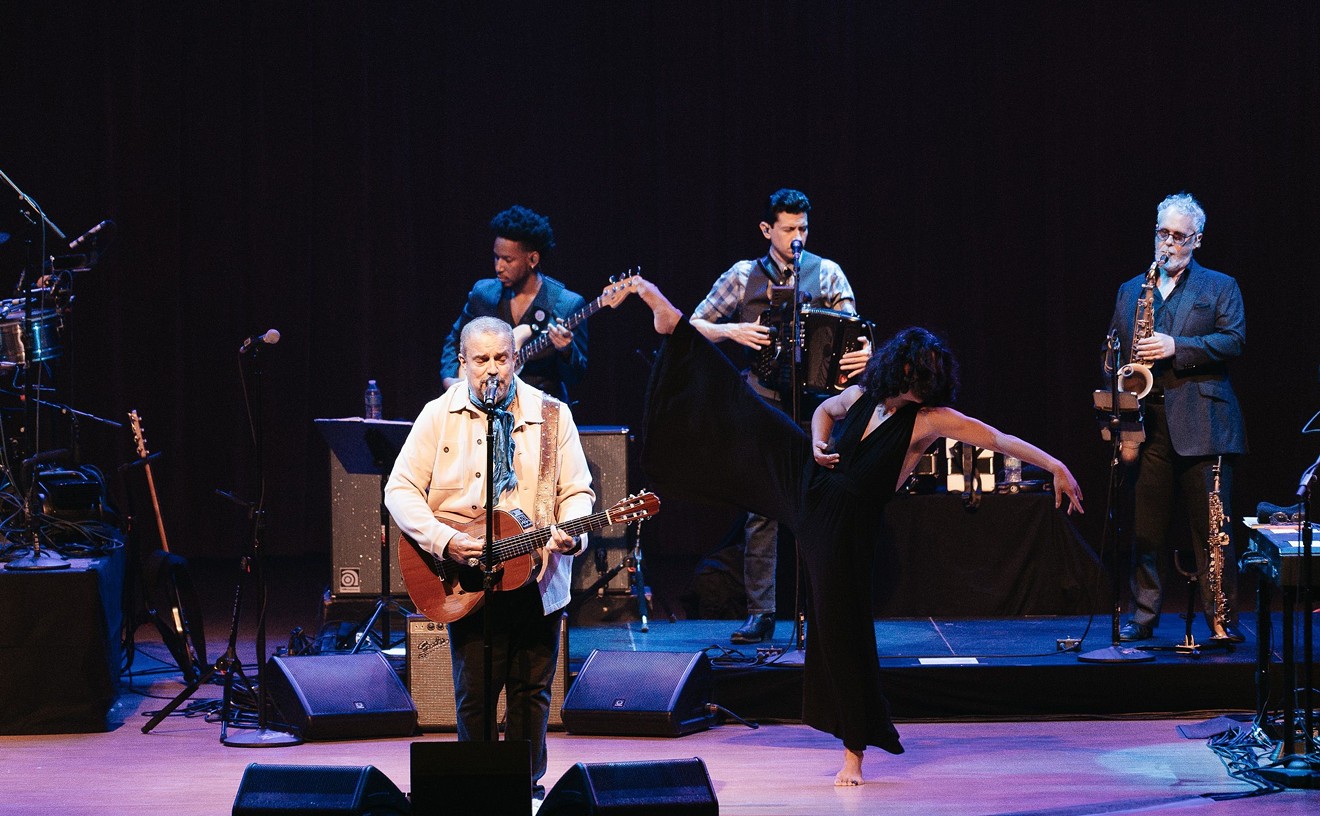Step Inside This House
(MCA/Curb)
Lyle Lovett, the wry Texas songwriter whose deadpan wit and unmistakable hairdo have brought him attention from beyond the prairie, plays songs written by musicians from his home state on his new double CD, Step Inside This House. With an all-star backup band made up of the bluegrass vocalist Alison Krauss and an assortment of Nashville's finest, Lovett glides through 21 songs by 12 Texas songwriters, such as the late Townes Van Zandt. While Lovett has often blended country and folk with his own sense of offbeat irony, the songs on his new CD are mostly straight-faced folk with occasional flashes of country twang. But the most plentiful ingredient here is Texas -- its busted old towns, its plains, its fresh eggs, and its train depots.
The songs on Step Inside This House are treated as carefully as borrowed possessions from old friends and delivered with spectacular clarity. But aside from being well-scrubbed renditions of songs forged in Texas from 1969 to the present, they also represent Lovett's attachment to the Lone Star State. This is significant considering Lovett grew up in a rural county near Houston that was named after his grandfather. He attended Texas A&M University in the late '70s, and it was in Texas in the mid-'80s that he got his start on the same circuit as Nanci Griffith.
The release of a CD such as Step Inside This House -- essentially a revue of Texas folk in a purer style than Lovett's previous work -- seems appropriate for Lovett at this stage in his career. He's achieved a modicum of popular success, with the pop-friendly Joshua Judges Ruth in 1992, a Best Country Album Grammy for 1996's Road to Ensenada, and a handful of movie roles. Now he's looking back, taking stock. Texas' cowboy-booted independence is the predominant cultural trait in his music, and apparently a rich source for his musical inspiration.
The first CD begins with "Bears," a good-time foot-stomper by Steven Fromholz. Then it veers into deeper territory with "Lungs," one of four songs by Van Zandt, whose lyrics spin standard folk topics such as lost love into abstract poetry. Guy Clark, a former TV art director and guitar builder, wrote the title track -- his first song ever, according to the liner notes -- back in 1971 but never recorded it. The pace of the songs is generally slow and contemplative, but some -- "Teach Me About Love" and "More Pretty Girls Than One," in particular -- venture further afield into peppy bluegrass and Hank Williams-type Nashville country.
As far as songwriting is concerned, Step Inside This House is a diverse collection full of stories and perspectives from Texas. Lovett's performance definitely enlivens the songs, his singing measured but subtle, at times dwindling to a whisper. For the eccentric son of the Texas prairie, Step Inside This House does the musical heritage of his home state proud.
-- Daniel Lovering
Cyrus Chestnut
Cyrus Chestnut
(Atlantic)
On Cyrus Chestnut's fifth outing as a bandleader, the pianist sheds his young-phenom rep for jazz-titan status. With a pair of sensitive producers, an all-star supporting cast, and nine new compositions that already sound like jazz standards, Chestnut serves notice that he's capable of creating classic jazz. As a result Cyrus Chestnut is the type of disc folks will be listening to 20 years after its release.
Co-produced by Atlantic Records' founder, Ahmet Ertegun, and long-time Chestnut collaborator Yves Beauvais, most of the tunes were recorded direct to two-track, which is practically unheard of in a hyperdigitized age of overdubs, samples, and 72-track recording capability. The simple retro-approach enhances the warmth of the material and preserves the delicate shading of nuanced performances by Chestnut and his cohorts. Ron Carter's full-to-phat bass lines cushion the bounce of Chestnut's piano on tunes such as "Miss Thing" and "The Journey," saxophonists James Carter and Joe Lovano breathe lush life into "Sharp," and drummer Billy Higgins beats and brushes subtle rhythms that mingle and pair up with each instrument in many songs.
Nothing gets lost in the mix. Even Chestnut's strained grunts and muted whoops are audible, and such candid moments are rarely captured in contemporary recordings. Most often they're edited out altogether or lost among tangled webs of studio glitz. Because of attention to such small details, the disc's vibe is comparable to experiencing the music in an intimate club setting, as opposed to the sterility of a cavernous theater or auditorium.
The unintrusive production also reinforces the expansive spirit of Chestnut's writing and playing. His cascading piano lines hint at playfulness in "Any Way You Can," and his Monk-meets-Morton imitation gives "Nutman's Invention #2" its off-kilter stride. To establish a wider emotional range, Chestnut gets meditative on "Elegant Flower," born-again on "Great Is Thy Faithfulness," and low-down on "Mother's Blues."
To his credit he remains within the parameters of classic jazz, even as he hints at other genres. Cyrus Chestnut is the focused product of a master jazzman.
-- John Lewis










